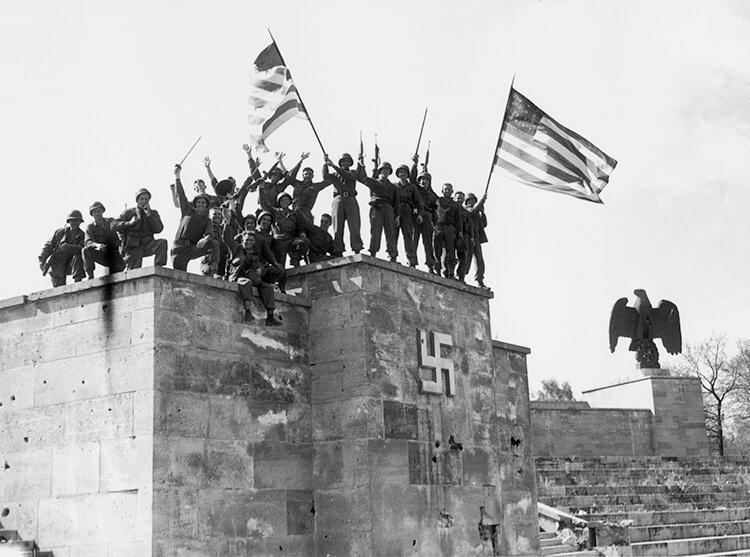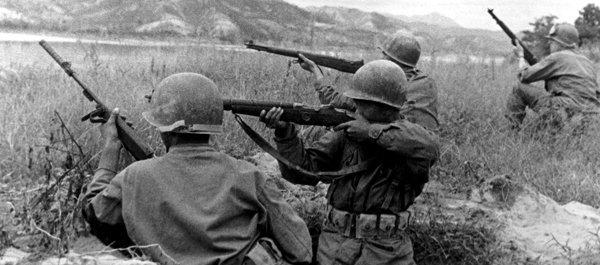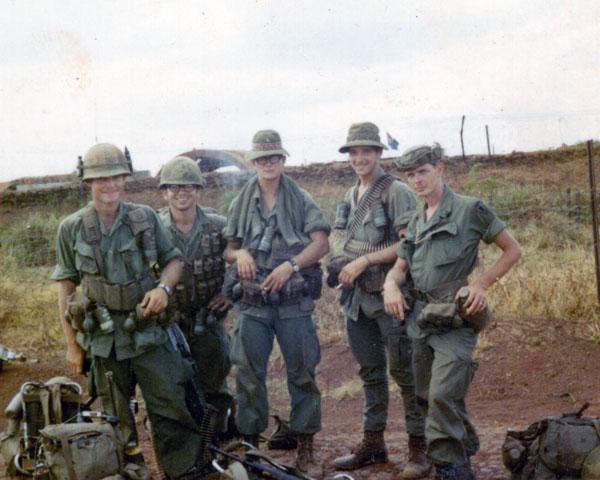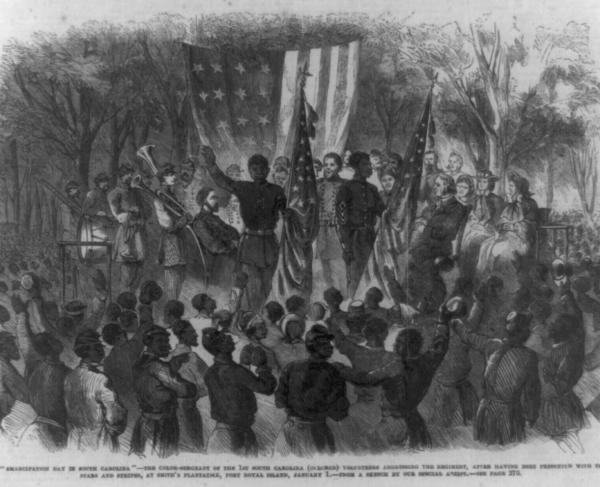The 5th U.S. Infantry Regiment

The 5th United States Infantry Regiment and its antecedents have served our nation for over 200 years on numerous battlefields around the world.
For the first seven years of its lineage, the 5th Infantry shares its history with the 4th Infantry. The 4th Infantry was formed in May and June 1808 under Colonel John P. Boyd. After a period of training in New England, the regiment joined General William H. Harrison's expedition into the Northwest and fought at the climactic Battle of Tippecanoe in 1812.
During the War of 1812, the 4th Infantry served on the Canadian-Michigan frontier during the year 1812 and surrendered with General William Hull's forces at Detroit. (The unit's colors were taken to Britain and are today on display in the Royal Welch Fusiliers Museum.) After a year of captivity in Quebec, the regiment was exchanged and posted to northern New York. In September 1814 the 4th Infantry fought at the Battle of Plattsburgh.
After the war's end in 1815, the U.S. Army consolidated its Regular infantry regiments from 44 to 8 (later 7). The 4th joined the 9th, 13th, 21st, 40th, and 46th to form the 5th Infantry, adding the York Expedition and the Battle of Sackets Harbor to the unit history and the battle honors for Chippewa and Lundy's Lane.

In 1815 the regiment deployed to the northeastern territories and spent the next 30 years on garrison and patrol duty in the area that became Michigan, Wisconsin, and Minnesota. One of the posts the unit established was Fort Snelling at modern Minneapolis/St. Paul, named after the regimental commander. In 1832 parts of the 5th fought at the Battle of Bad Axe, which effectively ended the Black Hawk War.
In 1845 half of the regiment joined Major General Zachary Taylor's army in southern Texas, and was in the thickest of the fighting during Taylor's first two victories at Palo Alto and Resaca de la Palma on 8 and 9 May 1846, during the Mexican-American War. At the latter battle, the 5th joined with the 8th Infantry in a decisive charge that broke the Mexican center. The 5th accompanied Taylor's advance to Monterey later in the year, assisting in the city's capture. It then transferred to Maj. Gen. Winfield Scott's Mexico City campaign in 1847, where the rest of the regiment joined. As a full unit, the 5th fought under William Worth at Contreras, Churubusco, Molino del Rey, and the storming of Chapultepec.
After the war, the 5th returned to the United States and operated in Arkansas, Indian Territory, and Texas for ten years. After a short stint in southwest Florida battling Seminole holdouts, the 5th participated in the Mormon Expedition under Albert Sidney Johnston. In 1859 it moved to New Mexico Territory.
The Civil War's outbreak found the 5th still in New Mexico. Orders sending it east were canceled upon appeal, as local leaders did not want to leave the frontier denuded of Regular troops. This decision proved wise, as in 1862 the 5th played a key role in turning back Henry Sibley's Confederate invasion of New Mexico. The 5th spent the remainder of the war on the frontier. In 1863 John F. Reynolds became its colonel; upon his death at Gettysburg, Daniel Butterfield was appointed colonel.
In 1866 the regiment moved to Kansas and served on the frontier until 1898. In 1869 Colonel Nelson A. Miles took command of the 5th. The regiment's two most notable operations during this period were pursuing Sitting Bull and Crazy Horse after the Battle of the Little Big Horn, and the Nez Perce chase in 1877.
During the War with Spain, the 5th Infantry remained in the United States and did not see combat. In 1900 it deployed to fight the Philippine Insurrection on Luzon. It then returned to the United States. When the U.S. entered World War I in 1917, the 5th Infantry joined the 17th Division. The division reached France too late to see any fighting, but the regiment performed occupation duties in Germany after the war before returning to the United States. It later posted to the Panama Canal Zone, where it was stationed on December 7, 1941.

The 5th remained in Panama until 1943, when it transferred to Fort Carson, Colorado for training with the 71st Infantry Division. The regiment deployed with the 71st to France in 1944, arriving in time to face the German Alsace (Nordwind) offensive in the last days of 1944 and first weeks of 1945. Advancing into Germany, the 71st Division captured Fulda, Bayreuth, and Nuremberg before sweeping southeast. The 5th Infantry was the first U.S. Army unit to cross the Danube and was first into Austria. After the war, the regiment performed occupation duties in Germany and Austria before being inactivated in 1946.
On January 1, 1949, the 5th Infantry reactivated in South Korea as an independent Regimental Combat Team. After covering the withdrawal of the last U.S. occupation troops from Korea, it moved to Hawaii in June 1949. The Korean War's outbreak a year later sent the 5th back to Korea, where it arrived in August and played an important role in holding the Pusan Perimeter. It then fought in every major campaign of the war until the armistice on 27 July 1953.

After several assignments in the United States, in 1963 the 5th Infantry joined the 25th Infantry Division, which it has been an integral part of almost continually since. The regiment served in Vietnam from 1966 to 1971, frequently in Cu Chi and War Zone C near Saigon. In 1975 it was the unit on Guam that helped receive and process refugees after the fall of South Vietnam. Elements of the regiment have deployed to Iraq and Afghanistan as part of the Global War on Terror.

The 5th Infantry remains on active duty with one battalion attached to the 1st Armored Division at Fort Bliss and one attached to the 25th Infantry Division at Fort Wainwright, Alaska.
The American Battlefield Trust has saved acreage at the following 5th Infantry battlefield: Glorieta Pass.


